Advertisements
Advertisements
प्रश्न
In the given diagram, shade the region which represents the set given underneath the diagrams: (B - A)'
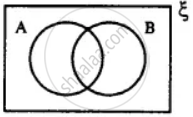
उत्तर
(B - A)' =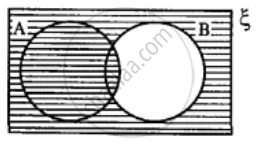
APPEARS IN
संबंधित प्रश्न
If A and B are two sets such that \[A \subset B\] then find:
\[A \cup B\]
If A = {1, 2, 3, 4, 5}, B = {4, 5, 6, 7, 8}, C = {7, 8, 9, 10, 11} and D = {10, 11, 12, 13, 14}, find:
\[B \cup C \cup D\]
Let \[A = \left\{ x: x \in N \right\}, B = \left\{ x: x - 2n, n \in N \right\}, C = \left\{ x: x = 2n - 1, n \in N \right\}\]and D = {x : x is a prime natural number}. Find: \[A \cap B\]
Express the truth of each of the following statements using Venn diagrams:
(a) No circles are polygons
(b) Some quadratic equations have equal roots
Using the Venn diagram, examine the logical equivalence of the following statements:
(a) Some politicians are actors.
(b) There are politicians who are actors.
(c) There are politicians who are not actors.
From the given diagram find :
A - B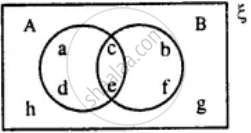
From the given diagram find :
(A ∪ B)'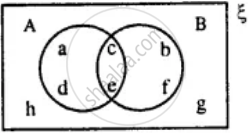
Use the given Venn-diagram to find:
B - A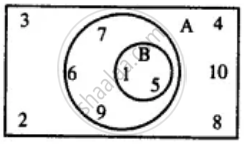
Use the given Venn-diagram to find :
B'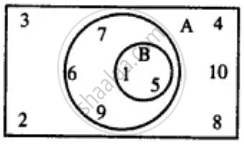
Represent the following statement by the Venn diagram.
No circle is rectangle.
